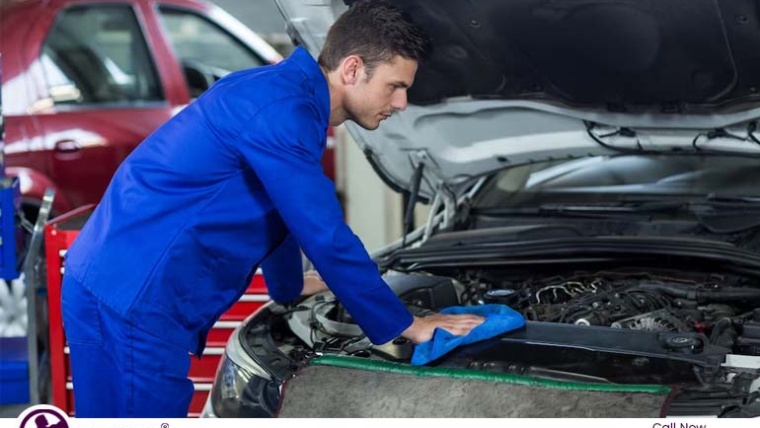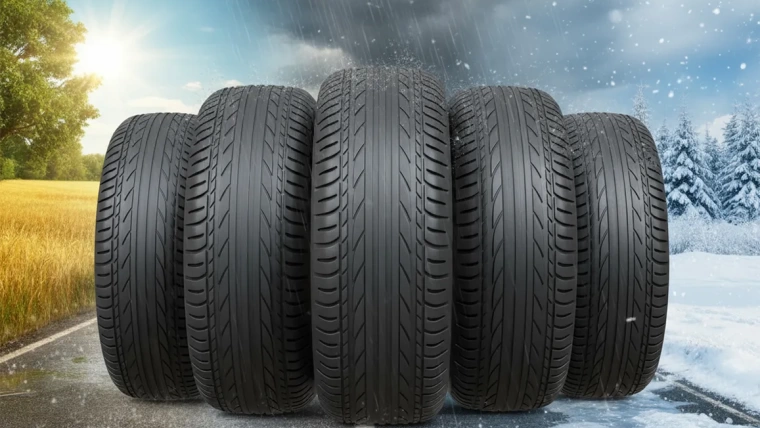You’re driving your vehicle safely, and everything appears to be going well. You turn a bend and there’s an animal in your path, something on the road, or a tyre blows out, causing your car to lose grip and start sliding. What are you going to do?
Panic….. But that will not help. So, what do you do now? Continue reading to learn how to maintain your car tyres so that nothing like this happens on the road. It will assist you in becoming one of the safest drivers. And also check out our CAR O MAN- car service and repair at an affordable price.
Tyre care and maintenance tips:
Tyres are the most critical and often overlooked component of a vehicle. Car tyre maintenance is critical since they are in close touch with the road, and if the pressure in the tyre is much lower or improper, if the car is driving at high speeds, it can be dangerous.
Factors that affect your car tyre
Don’t spin your tyres excessively
When your car is stuck in mud, sand, snow, or ice, avoid excessive tyre rotation. This can lead to tyre overheating and irreversible damage. Use a gently backward and forward rocking motion, to move your car. Never stand close or behind a tyre spinning at high speeds, such as when attempting to push a stalled vehicle or using an on-car spin balance machine.
Check your tyres for wear
When the tread depth exceeds 1.6mm, remove the tyres from service. Tread wear indicators, which appear as smooth banks in the tread grooves when they wear to 1.6mm, are standard on all new tyres. Skidding on bare or nearly bald tyres might cause a wet weather mishap. Excessively worn tyres are also more prone to punctures.
Overinflation or Underinflation
If the tyres are not inflated to the proper pressure, the tyre’s quality becomes irrelevant. Inflation below the specified pressure or over the recommended pressure might reduce tyre life.
Load on a vehicle
Uneven load distribution can produce an unbalanced stress on some tyres, resulting in permanent damage.
Speed
Driving at high speeds continually can diminish tyre stiffness owing to excessive heating of the rubber, which will eventually lead to increased tyre wear or damage because rubber is a non-conductor of heat and will retain it.
Wheel alignment
A car is appropriately aligned when its suspension components or steering are set according to the manufacturer’s specifications, or when its wheels run straight. Safety car wheel alignment is crucial for proper vehicle control. Get your tyres adjusted as soon as you notice your car pulling to one side or another.
Wheel balancing
Wheel alignment and wheel balancing are frequently confused, however wheel balancing tyres are balanced by inserting weights on the tyres to offset the heavy regions. Wheel balance is critical for driving enjoyment, safety, and increased tyre life.
Rotation of the tyre
Tyre rotation is recommended for optimum tyre life and uniform tyre tread wear. It should function according to the manufacturer’s specifications.
Condition of the road
The conditions under which tyres work, as well as the speed, have a significant impact on tyre life, such as broken roads or rough road surfaces, mountainous roads, and so on, and you may also encounter car breakdown repair in the middle of the road.
Different driving habits
Some driving practices, such as driving at high speeds with underinflated tyres, making sharp curves at high speeds, driving over substantial obstacles, and so on, can cause severe damage to the tyres.
Impact of the season
Different or changing weather conditions, such as dry and hot weather in the summer and cold weather in the winter, affect structural durability or mileage.
Common tyre problems & its solution
Because automobile tyres bear the entire weight of the vehicle and are the only portion of your vehicle in direct touch with the road, some issues are unavoidable over time, including:
Tyre pressure issues and safety
Regular tyre pressure checking is an important thing. To avoid tyre damage from underinflation, keep an eye on pressure levels and top up with air as needed. Underinflation can also raise your fuel expenses, cause faster tyre wear on the outside edges, and increase your chances of an accident.
Tyres can suffer from both underinflation and overinflation. When your tyres are overinflated, the tread wears off faster in the centre. Your tyres will also be more likely to fail. Overinflation can also compromise grip due to a decrease in tread contact with the road, resulting in greater wear in the centre of the tread.
You may check your tyre pressure with a pressure gauge, which you can buy or rent from a car service centre. Despite the fact that many vehicles have their own pressure monitoring systems, it is nevertheless recommended to check these manually.
Tyre tread wear indicator- worn tyre tread
No matter how well you maintain your tyres, they will eventually wear out because the tread of the tyre, which is important when braking or maintaining a grip on the road surface, wears away with time, and when the tread depth is less than 1.6 mm, your tyres must be replaced.
Punctures or bulges – car tyre maintenance
Puncture damage has varying ranges, as a little puncture may be repaired in the garage, whilst a large puncture requires the tyre to be replaced. Bulges, on the other hand, might arise as a result of tyre collision and can be fixed in garages.
Car tyre Maintenance tips
We frequently purchase expensive tyres in order to get more mileage or use less fuel, to last longer, to be safer, and so on. However, if the tyres are not properly maintained, they will behave like a budget tyre, becoming worn, flat, or hazardous. CAR O MAN presents some tyre maintenance suggestions to help you keep your tyres in good shape and avoid this.
- Car tyre inspection or replacement Tyre pressure, including air pressure in the spare tyre, should be checked on a regular basis.
- Keep the air pressure at the manufacturer’s recommended level.
- Excessive tyre spinning, such as when your automobile is bogged in the sand, should be avoided because it can cause irreversible damage.
- Tyres should be inspected on a regular basis to check for damage or to confirm the tyre’s standard safety conditions.
- Overloading the car will increase the load on the tyres, resulting in greater fuel consumption or damage.
- For a longer tyre life, rotate your tyres and have your wheels aligned and balanced on a regular basis.
- If the tyre tread depth is less than 1.6 mm, replace the tyres as they will lose grip and braking capabilities.
Follow these car tyre safety tips to extend the life of your tyres. Share these tyre care and car maintenance services for tyre-tips with all of your friends to educate them on how to care for tyres.
CAR O MAN is always available for wheel alignment, brake repair, and a variety of other services.


